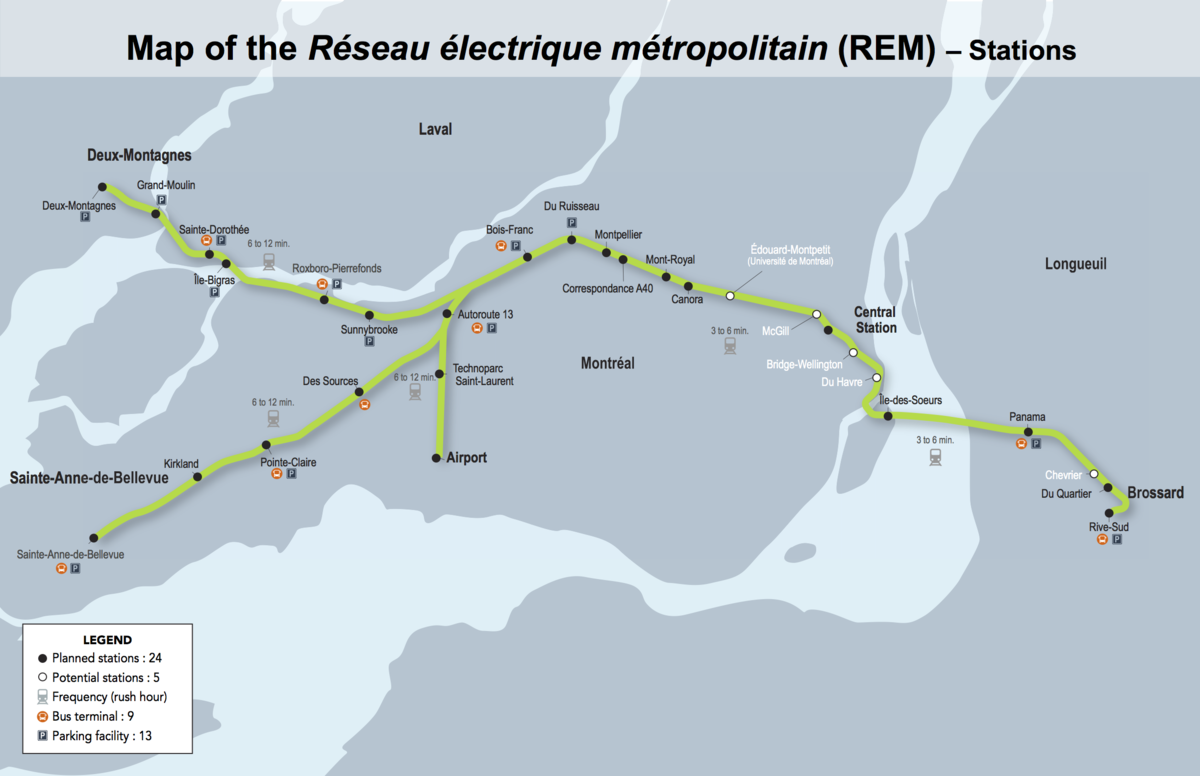robmausser
Senior Member
So, today was a huge announcement for the REM, bringing it into the realm of reality (construction starts in two months!), and I just want to compare and contrast the two projects. Both have similar costs (Eglinton is $5.3 billion in $2010, $9.1 billion including maintenance, whereas the REM is $6.3 in $2017)
The REM is what GO-ALRT would have been like. Completely new travel patterns would be possible by public transit, at a fraction of the cost of normal subway development, mostly by leveraging existing ROWs.
- But the REM is 67 kilometers, compared to 19 kilometers for the Eglinton LRT.
- The REM is being built to modern standards (driverless, platform screen doors, entirely grade separated). The Eglinton LRT is missing those features, which any newly built system elsewhere (in Europe or Asia) would have.
- Whereas the REM is 100% grade separated and will achieve fast top speeds and represents massive time savings. The Eglinton LRT will run on street, stopping midblock and at red lights.
- The REM will be entirely automated. The Eglinton LRT will cost $80 million/year to operate (in addition to the 30-year $3.8 billion maintenance contract.)
- The REM represents a big connectivity improvement, linking the Airport, North Shore, South Shore, in routes that had not existed before. The Eglinton LRT is an improvement on an existing bus route, and did not through-route with the SRT at its end or connect to the airport.
- I cannot find any figures for the daily ridership of the Eglinton LRT, but I am certain it is less than the 167 000 daily riders projected for the REM.
- The Eglinton LRT has been planned in various forms since the 1960s, with construction having previously been started in the 1990s. It will be in service in 2022. The REM was first conceived about 2 years ago (although it builds off of previous proposals, e.g. for metro Line 3), and will be in service about the same time as the Eglinton LRT (2021-2022).
View attachment 134415
This isn't meant to be a pissing contest, I'm just pointing out that a lot of things about the Eglinton line need a value-for-money comparison. And also take a look at how other projects have been able to rapidly go from conception to construction.
There are a couple reasons this is happening much faster for REM than Crosstown.
1. Money. With the investments REM has seen, they certainly got lucky in that regard.
2. Using old rail corridors and tunnels, as well as a bridge that already needed to be built. We had to tunnel for Crosstown, the REM has the advantage of using the Mont Royal tunnel, the Deux-Montagnes line, as well as old railway spurs to the airport and for the saint anne portion (only half of the distance runs on the Autoroute, the other half uses a rail corridor.
Also this is more line GO-ALRT, but also a modern comparison would be GO-RER.








